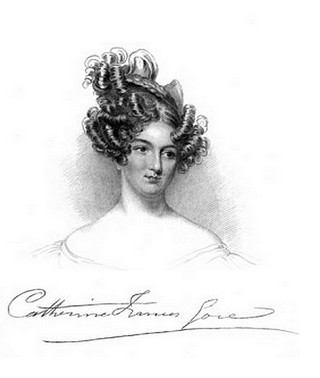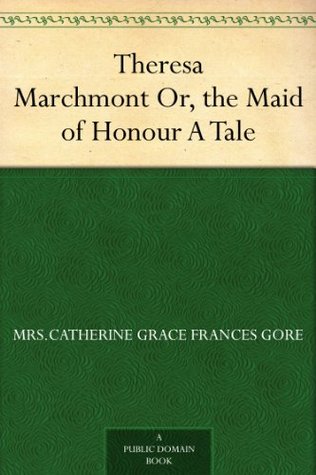Early Life and Marriage
Catherine Grace Frances Moody Gore (Catherine Gore) was born on 12th February 1798 in London. She was the youngest child of Charles Moody, who was a wine merchant at Retford (a town in England) and died soon afterwards. Her mother was Mary Moody, who remarried in 1801 after the death of her first husband, to Charles.D Nevinson who was a physician in London and that’s why Gore is referred as “Miss Nevinson” in her scholar writings and life.
Catherine was interested in writing from her childhood and because of this she got the nickname “The Poetess”.
She was married to Charles Arthur Gore who was 1st Regiment of Life Guards on 15th February 1823 at St. George’s, Hanover Square. Her husband retired later that year.
They had 10 children out of which 8 died at a young age and the remaining two were, a son who became Captain Augustus Frederick Wentworth Gore and a daughter, Cecilia Anne Marry who was married to Lord Edward Thynne who was an English Nobleman in 1853. This was his second marriage.

Literary Career of Catherine Gore
Catherine became a writer and wrote many novels between the period 1823 – 1861 when she died. She is one the best known of “silver fork” writer. She wrote approx. 70 novels in her lifetime which were fashionable. She was known to be a witty writer.
Her first novel was “Theresa Marchmont, or, The maid of Honour” which was published in 1824. The first novel was published as “The Broken Hearts” in 1823. Her first-ever novel which was a major success was “Pin Money” which was published in 1831. The most popular and well-known novel was “Cecil, or, Adventure of a Coxcomb” which was published in 1841.
She also wrote plays that were successful but did not gain as much fame as her novels. She wrote 11 plays that made to the London stage. Her famous drama was “School for Coquettes” which was produced at Haymarket in 1831. She also composed music for songs.
She moved to Paris in 1832 and remained there for 9 years. Later, In 1855, she fell victim to a bank scandal.
She also wrote Articles in “Bentley’s Miscellany” (an English literary magazine started by Richard Bentley published between 1836-1868) under the pseudonym “Albany Poytnz”.
Famous Works of Catherine Gore

Catherine Gore’s Women as they are, or, The manners of the day
It was published by H. Colburn and R. Bentley in 1830. This work has been selected by scholars because it is taken into account culturally important, and is a component of the knowledge domain of civilization as we all know it.
Through this book, Gore entered the “silver fork” writers (describing of the long Regency era depicting gentility and etiquette of high society)which is why she is compared to Jane Austen and Susan Ferrier. It was mainly focused on Regency England.
Pin Money
Published by H. Colburn and R. Bentley in 1831, this novel is a romantic novel describing the life of a couple who were soon to be married and if their good and chattels can be brought to unite. This novel was Gore’s first-ever major success.
Cecil, or, Adventures of a Coxcomb
It was published in 1841 and it is a “classic”. This novel is her best-known and it is a biography of a companion of Lord Byron. Cecil Danby, who later became Lord Ormington who was a Regency dandy and a Byronic figure. This work has been selected by scholars because it is taken into account culturally important, and is a component of the knowledge domain of civilization as we all know it.
This novel has a second part too, Cecil, A Peer which was also published in 1841.
Banker’s Wife, or Court and City
It was published by H. Colburn in 1843. This novel gained more fame after it was reissued in 1855 when she fell victim to a bank scandal. This novel was a story about a corrupt banker and because of this scandal she brought herself a never-ending pursuit to expose hypocrisy and because of this scandal, censure was brought many times during her career.
Death & the legacy of Catherine Gore
She continued to write novels, plays, and poetry until she finally died on the 29th of January 1861 at Linwood, Hampshire. On her demise, The Times (British daily national newspaper based in London) concluded that she was “the best novel writer of her class and the wittiest woman of her age”.
Read more about other famous female authors from Victorian times.